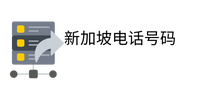Are you struggling to choose the right database for your project? With so many options available, it can be overwhelming to decide which one will best suit your needs. In this blog post, we will discuss the factors to consider when selecting a database, three different titles, and provide you with valuable insights to help you make an informed decision.
Factors to Consider
- Scalability: One of the most important factors to consider overseas data when choosing a database is scalability. Will your database be able to handle an increase in data volume as your project grows? Look for a database that offers horizontal scalability, allowing you to easily add more servers to meet your growing needs.
- Performance: The performance of your database is crucial to the success of your project. Consider factors such as read and write speeds, indexing capabilities, and query optimization when evaluating different databases. Choose a database that can efficiently handle the workload of your application.
- Data Model: Different databases support different data phone database management for marketing success models, such as relational, document-oriented, or graph databases. Consider the structure of your data and choose a database that aligns with your specific requirements. For example, if you have complex relationships between your data, a graph database may be the best choice.
- Consistency and Availability: Look for a database that offers high availability and consistency guarantees. Consider whether you need strong consistency for your data or if eventual consistency is sufficient for your application. Ensure that the database’s replication and failover mechanisms meet your requirements for uptime.
Title 1: “Exploring Different Types of Databases”
When choosing a database, it’s essential to understand the different types available and their unique characteristics. From traditional relational databases to NoSQL databases like MongoDB and Cassandra, each type has its strengths and weaknesses. Consider the specific needs of your project and explore the various database options to find the best fit.
Title 2: “Comparing SQL vs. NoSQL Databases”
One of the key decisions you’ll need to make when selecting a database is whether to choose a traditional SQL database or a NoSQL database. SQL databases offer strict data consistency and china business directory structured query language, while NoSQL databases provide flexibility and scalability. Compare the features of both types to determine which will best meet your project requirements.
Title 3: “Tips for Evaluating Database Performance”
Database performance is critical to the overall success of your project. To ensure you choose a database that can meet your performance needs, consider factors such as indexing, query optimization, and caching mechanisms. Test the performance of different databases with your application’s workload to make an informed decision.
In conclusion, choosing the right database for your needs is a crucial decision that can impact the success of your project. By considering factors such as scalability, performance, data model, consistency, and availability, you can select a database that aligns with your specific requirements. Explore different types of databases, compare SQL vs. NoSQL options, and evaluate database performance to make an informed decision that will set your project up for success.
